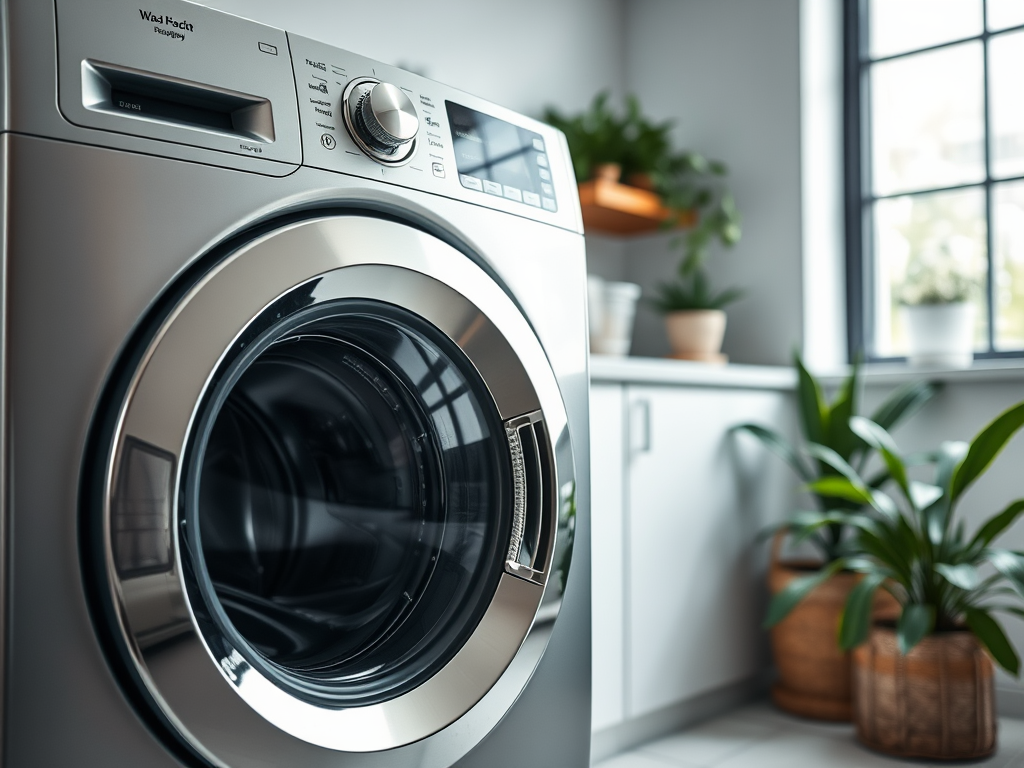Washing your clothes might seem like a mundane chore, yet it poses a significant opportunity to maintain your wardrobe and uphold the quality of your fabrics. If done correctly, it can help you avoid the frustration of color bleeding, fabric damage, and unwanted odors. Understanding how to operate your washing machine effectively, beyond just pushing buttons, will lead to fresher, longer-lasting textiles. In this guide, we’ll explore the essential steps involved in properly washing with a washing machine, from preparation to drying. Whether you’re a seasoned laundry expert or a novice, this resource will provide you with actionable insights that can transform your washing routine. So, let’s dive into the world of laundry mastery!
Understanding Your Washing Machine

To effectively wash your clothes, it’s essential to understand how your washing machine operates. This understanding will empower you to choose the right settings and products for superior cleaning results. The key is recognizing the fundamental differences between the various types of washing machines available today. Each type brings distinct advantages that suit different lifestyles and laundry habits.
- Top-Loading Washers: Often more accessible for loading and unloading, they allow you to add forgotten items mid-cycle.
- Front-Loading Washers: Generally more energy and water-efficient, they use a horizontal drum design and are known for better cleaning performance.
- Compact Washers: Perfect for small spaces, offering versatility without sacrificing quality in washing.
Preparing Your Laundry

Proper preparation can greatly enhance your washing experience. When done right, it can lead to better results while prolonging the life of your garments. To maximize your washing machine’s efficiency, you need to carefully prepare your laundry. This involves sorting your items according to certain criteria and reviewing care labels that provide essential washing guidelines.
Sort Your Laundry
Before washing, it’s crucial to categorize your items based on color and fabric type. Sorting is not just a matter of preference; it prevents various issues that can arise during washing. Here’s how you can categorize your laundry:
- Color: Separate whites, darks, and colors to prevent color bleeding.
- Fabric Type: Group heavier items like towels and bedding separately from lighter fabrics.
- Soil Level: Consider separating heavily soiled items from lightly soiled ones to enhance cleaning effectiveness.
Check Labels and Care Instructions
Each garment comes with care labels that provide guidance on washing temperatures, drying, and ironing. Misunderstanding these instructions can result in damaged clothing. Thus, taking a moment to read the labels can ensure your clothes are treated appropriately.
Loading the Washing Machine
How you load your washing machine dramatically impacts both cleaning effectiveness and the longevity of your appliance. Overloading can lead to ineffective washing, while underloading can waste water and energy. Here are some best practices for loading your washing machine:
| Factor | Best Practices |
|---|---|
| Loading Capacity | Aim for about 3/4 of the drum full for optimal results. |
| Item Distribution | Distribute items evenly to avoid unbalanced loads. |
| Use of Detergent | Follow manufacturer recommendations; using too much can lead to residue. |
Selecting the Correct Wash Cycle
Choosing the right cycle for your laundry is crucial for optimal cleaning and care of your garments. Different fabrics and soiling levels require distinct washing methods. Failing to select the appropriate cycle could potentially damage delicate materials or leave stains intact.
Understanding the different wash cycles can dramatically impact the cleanliness and longevity of your clothes. The following cycles are commonly available across most machines:
- Normal Cycle: Ideal for everyday items like t-shirts and shorts.
- Delicate Cycle: Designed for fragile fabrics such as lingerie and silk.
- Heavy Duty Cycle: Best for items requiring intense cleaning, like work clothes or heavily soiled linens.
Drying Your Clothes
How you dry your clothes is just as important as how you wash them. Selecting the right method can help preserve fabric integrity while maximizing freshness. Improper drying techniques can lead to shrinkage, fading, and wear over time. Therefore, it’s essential to choose a method suitable for the fabric types you are handling.
Deciding between different drying methods brings a variety of factors to consider. Here are two common methods:
- Tumble Drying: Quick and efficient but may cause shrinkage or damage to delicate fabrics.
- Air Drying: Gentler on clothes, significantly reducing the chances of damage but typically takes longer.
Conclusion
By mastering the art of washing your clothes in the washing machine, from preparation through to drying, you can not only extend the life of your garments but also enjoy noticeably cleaner and fresher laundry. A thoughtful approach, paying attention to specific fabric care needs and utilizing the right washing machine settings, enhances your entire laundry experience. Empower yourself with the methods outlined in this guide, and transform laundry day from a daunting task into an easy, effective routine.
Frequently Asked Questions
- What is the best temperature to wash clothes?
Most clothes wash effectively in cold to warm water (30°C – 40°C). Delicates may require cold water. - Can I wash all fabrics together?
No, it’s best to separate fabrics by color and type to avoid damage and color bleeding. - How much detergent should I use?
Follow the manufacturer’s instructions on the detergent packaging, taking into account the load size and soil level. - Is it necessary to use fabric softener?
While not necessary, fabric softener can enhance softness and reduce static cling if desired. - What should I do if my clothes come out of the wash smelling bad?
Ensure you’re not overloading the machine, using the right detergent, and cleaning your machine regularly to prevent odor buildup.
